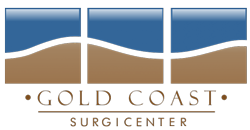Do You Have Elbow Pain?
Spending hours at work, exercising, or training for sports can take a toll on the body. The joints often suffer the most, with joint pain happening to millions of people every year. Some experience elbow pain caused by a condition called elbow bursitis. Also known as olecranon bursitis, the condition can limit the use of the elbow and requires immediate treatment. Here are some of the steps that can help reduce pain, including surgery.
Understanding elbow bursitis
Because joints undergo constant use, there are parts of the body designed to protect the area and help with movement. Bursae are one such component, responsible for keeping joints lubricated and helping with smooth movement. With over 160 in the body, bursae are sacs filled with synovial fluid that sit next to the tendons. Elbow bursitis specifically refers to the olecranon bursa located near the pointy part of the elbow. Due to overuse, injury, arthritis, or infection, the bursa becomes inflamed. Elbow bursitis can cause a range of unpleasant, uncomfortable symptoms.
Signs and symptoms of bursitis
When the bursa becomes inflamed, fluid can build up in the sac. This buildup can cause a soft, swollen, red bump at the back of the elbow. Besides swelling, some people experience pain at the back of the elbow. Bending the joint is painful and can even become difficult if the bursa increases in size. In serious cases, fever, redness, and fatigue can happen, indicating an infection. Bursitis is more likely to happen to athletes, men over 40, or anyone with rheumatoid arthritis.
Treating with rest and ice
Make sure to visit a doctor if the signs and symptoms persist. For symptoms indicating an infection, make sure to seek medical help immediately. The doctor will first confirm elbow bursitis with a physical exam and x-ray. Treatment starts from there based on the degree of pain and swelling. Rest and ice are the most basic yet most effective treatment options to start. Continuing to do the activities that caused the pain will only make things worse. Make sure to not lean, rest, or apply undue pressure on the back of the elbow. While resting, applying an ice pack or cold compress can start to reduce the swelling. These methods work well with mild cases.
Turning to NSAIDs and steroids
NSAIDs or non-steroidal anti-inflammatory drugs are another effective treatment option. These drugs are over-the-counter medications that can help suppress inflammation and pain. In some cases, the doctor may prescribe stronger NSAIDs. Steroid injections combine an anesthetic and corticosteroid to provide long-term relief. These help in cases where NSAIDs fail and can only happen 3 times yearly.
Draining the bursa
Some doctors may suggest draining the excess fluid buildup in the bursa. Like a steroid injection, this is a simple procedure at the office. The doctor uses a syringe to drain the fluid, which can reduce the pain and swelling. In some cases, the fluid can be tested for conditions like rheumatoid arthritis. There are mixed opinions on the safety and effectiveness of draining the bursa as there is the chance of infection. Make sure to speak with the doctor about the possible risks that come with the procedure.
Surgery as a last resort
If all the treatment options fail, which is rare, a doctor will suggest surgery. The surgery will work best for chronic cases lasting several months or infections. Elbow bursitis is a minimally invasive surgery, meaning the patient can leave the same day. The procedure removes the bursa and any bone spurs that may be causing elbow pain. The patient will need about 4-6 weeks of recovery with a splint to protect the surgical site. Surgery has a high success rate and can help with long-term pain.
Elbow bursitis is treatable
The pain and swelling from bursitis can restrict the use of the elbow and arm if left untreated. Fortunately, these treatment methods can help reduce swelling and discomfort. Most cases respond well and do not require surgery. However, if the pain persists, talk to a doctor about surgery.


